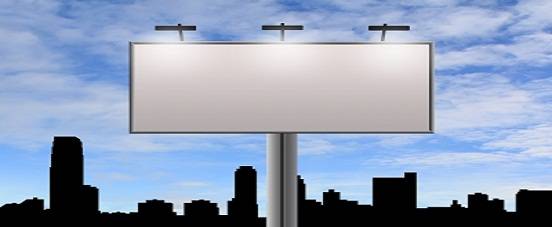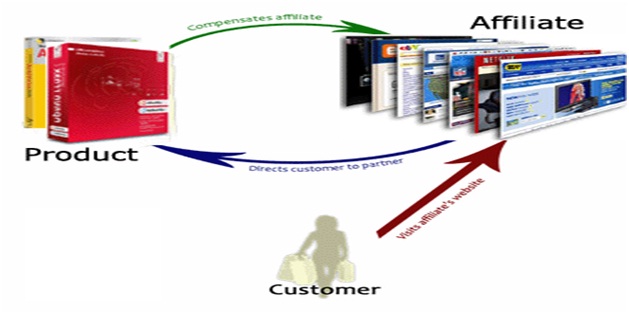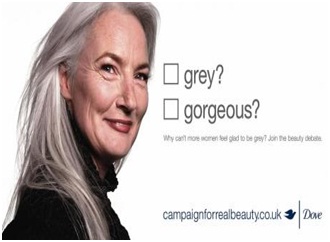- Articles ›
- Marketing and Strategy ›
- Not Another Marketing Article!- Various Unorthodox Marketing Practices Articles
Not Another Marketing Article!- Various Unorthodox Marketing Practices
No one can deny the omnipresence of marketing and advertising in the world we live in. From something as tiny as a bolt to an entire airplane everything is marketed and advertised. So much so that it has become overtly irritating and has left the consumer in a bad taste. People are tired being told what to do.
Too much sales pressure on companies has led to excessive, sometimes fictitious promotional content, resulting in customers’ boredom, cynicism, confusion and irritation. Customers now vouch for simplicity and authenticity. Such a scenario creates a new challenge for brands that not only have to promote their product to the customer but also differentiate themselves from the competitors.

Image: FreeDigitalPhotos.net
So, how do you push your product to a customer who has turned a deaf ear to you? The answer is simple ‘You Don’t’! Thus comes into picture the concept of ‘Anti-Marketing’. Though there is no exact definition to this term but the idea is to attract the customer so that he himself comes to you willingly. Anti-marketing can have different forms like Grassroots advertising, Reverse marketing, Non-advertising and Anti-advertising. Let’s take each of these unorthodox marketing practices individually.
Grassroots Advertising
Instead of trying to make potential clients through a marketing effort using advertisements on popular media like radio or TV or a magazine, you instead create an interactive marketing program which is driven by your customer himself. Grassroots advertising may include marketing by word of mouth, client commercials, referrals and affiliate marketing. Word of mouth is the oldest way of marketing and perhaps ranks topmost in believability as it is the voice of the satisfied consumer.
Word of mouth advertising though takes time but it can be very powerful once it gets going. Client commercials or crowdsourced commercials are also an innovative way to engage the customer making the consumers become ‘brand partners’ rather than ‘brand users’. Hum mein hai Hero campaign of Hero Motocorp is the latest example of a client commercial. When a company or sales professional entices clients to sell to other clients it is called a ‘referral’.
Satisfied customers become salespersons, and the company only has to pay the referring customers if sale occurs. Education coaching institutes like NIIT use such referral schemes to enroll more students. Lastly there is affiliate marketing in which a company collaborates with people with websites who promote and sell its product in order to drive traffic to their website.For example, when you use Google search engine, the results that appear on the right side are affiliate links. Some other major affiliate networks include Amazon Associates and the eBay Partner Network. Here is an overview of how affiliate marketing works.

Source - http://mauriswayto50000.com/affiliate-marketing/
Reverse Marketing
Customers are being more and more conservative in spending their hard earned money on products and services they don’t know about. This new technique of ‘reverse marketing’ takes advantage of this very fact. Reverse marketing aims at providing helpful information to the customer to help them satisfy their need. Thus, the main aim of reverse marketing is to provide valuable advice to the customer rather than going for hard-sell tactics to push your product to the consumer. Suppose that your target audience is into health and fitness. By giving free tips and advice, you highlight the problems that they are facing but may not be aware of. They will be more inclined to find a solution for that problem. With the problems you highlighted, and your solution right in front of them, they will most likely turn to you.
The non-advertising stance
Advertising can cost to about as much as 80% of the final product cost, one can imagine how much competitive advantage a company can gain following a low price strategy not going for advertising. The logic though very simple is applied by a very few companies. Companies go after advertising blindly, just because their competitors are doing it. Advertisements have today lost relevance to the product they represent and have become mere tools to satisfy the creative ego of big advertising agencies. Let us take the example of age old Fevicol ads- entertaining to the core, these are a few of the most popular and recognizable ads.

These ads are considered the reason for Fevicol’s monopoly in the adhesive industry. But seriously thinking, do these ads in any way affect a carpenter’s (targeted consumer) decision to choose which adhesive to use? Won’t he first look at the quality of the adhesive and its price rather than looking at how many people stick to a bus in the advertisement? Moreover there is no certain way to measure the effectiveness of advertising and its contribution to sales.
The key here is to recognize that when we talk of brand equity, all which really matters, is that the customer develops a positive image of the brand and thus we have the examples of some companies like Costco wholesale, The Bodyshop and Ferrari who have been very successful without spending a penny on advertising. Talking of Ferrari, the brand attracts people passionate for speed and design. The company thrives on exclusivity as its marketing strategy. No flashy billboards, no glossy pages in magazines, no ad campaigns, like its competitors and yet they sell every car they make!
Anti-advertising
Traditional advertising is based on concept of telling customer that their lives are miserable and will change drastically for the good after using the product advertised. Such an approach is very common in advertisements today with the most common example being of fairness and anti-aging creams. Ads show women frowned upon just because their natural skin colour is not fair. Usually these ads run as, "See what happened to this girl who doesn’t use our product she's dark, ugly and no one likes her. Do you want to be this way?”
Such advertisements have invited flak for promoting insecurity and discrimination among customers. This is where the concept of anti-advertising comes in. These ads are based on a contrary approach to the traditional advertising. They claim that the consumers are awesome even if they don’t use a particular company’s products. In these advertisements element of irony may be used to reaffirm our sense of rebelliousness, while guiding our critical attitudes into the ultimate goal i.e. consumption.

The most common example is that of Dove- Instead of pointing at the little immaterial flaws, Dove asked women to come together and celebrate their beauty. Instead of using models, Dove uses 'real women', beautiful, but not extremely so, to add a touch of realism and believability. Another example that can be given is that of ‘Sprite’. With a tagline like ‘Sprite bujhaye only pyaas, baaki all bakwaas!’, Sprite moves away from the traditional soft drink advertisements and does not claim to provide any kind of so called ‘cool image’ to its consumer.
So, in this new world of marketing, brands are trying hard to move away from the traditional form of pushing products by advertising, instead they want to attract customers towards the product by portraying that they have no intentions of forcing the customer to use their product and he shall do so only if he wishes. For example the TVCs of the show ‘Satyamev Jayate' never really talked about the contents of the show and Amir Khan not even once in those TVCs appealed the audience to watch the show.
In fact the only information revealed was the title of the show. Instead of making false claims the onus is now on increasing the believability of the product. People are becoming smarter and do not like to be deceived. People either ignore ads completely or get annoyed by them. With everyone selling something,marketers need to be different and more creative. People like to be treated with respect and want to be enlightened. They appreciate truthfulness of the brands they wish to follow. And thus the concept of Anti-marketing comes to the fore with its unconventional ways of attracting the customer. And if you got into reading this article getting curious by first reading its title, you are probably the latest victim of this exciting marketing technique!!
This article has been authored by Pranav Bajaj from IMT Ghaziabad.
Views expressed in the article are personal. The articles are for educational & academic purpose only, and have been uploaded by the MBA Skool Team.
If you are interested in writing articles for us, Submit Here
Share this Page on:
What is MBA Skool?About Us
MBA Skool is a Knowledge Resource for Management Students, Aspirants & Professionals.
Business Courses
Quizzes & Skills
Quizzes test your expertise in business and Skill tests evaluate your management traits
All Business Sections
Write for Us